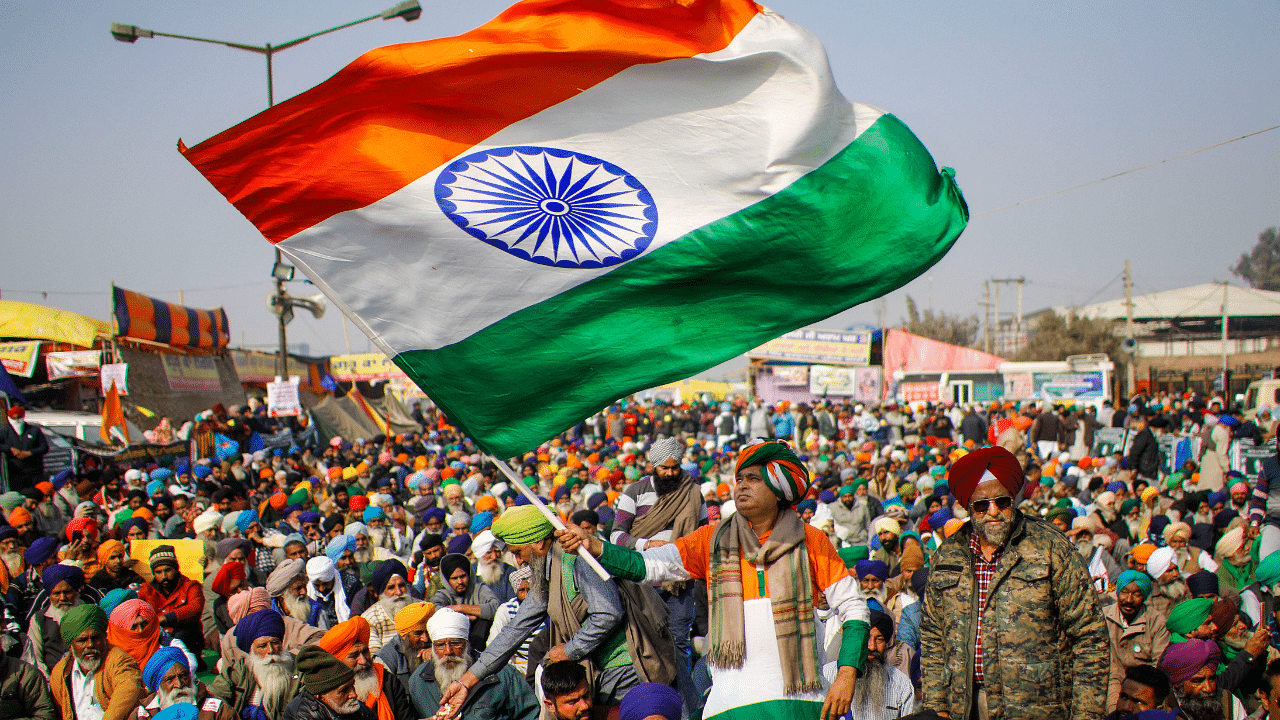
It has been a year since farmers marched towards New Delhi and held highways outside the capital hostage demanding a repeal of the Centre’s three agricultural reforms which they claimed would leave them to the mercy of the corporates. While their persistence made the government relent and roll back the laws, thousands of farmers are still walking to Parliament because the agitation is not over.
As the protest completes one year, more farmers from Haryana and Punjab headed to the Singhu and Tikri borders of the national capital. Thousands of farmers from parts of both states, including Amritsar, Jalandhar, Ferozepur, Patiala, Ludhiana, Sangrur, Ambala, Hisar, Sirsa, Rohtak, Kurukshetra, Bhiwani, are reaching Delhi's borders.
Even though the first protest against the laws was held in September after the Bills were cleared in both Houses, the ‘Dilli Chalo’ protest of November 26 is considered the inception of the year-long ‘Satyagrah’ through which farmers braved the extremities of all seasons and a deadly second wave of Covid-19. Over 700 farmers died during the agitation.
Also Read | Farmers' movement will be remembered for arrogance of BJP government, says Priyanka Gandhi
Farmers formed the Samyukta Kisan Morcha (SKM), an umbrella body of 40 farmer organisations, which would go on to lead the movement to its victory, albeit partial.
As the occupation of Delhi’s inbound highways continued through December, multiple talks were held with the government but they failed.
In December, the Bharatiya Kisan Union (BKU) moved the Supreme Court against the agricultural reforms, for which the apex court pulled up the Centre and its handling of the protests.
Many ministers in the BJP-led government at the Centre said the protests were driven by political motives, with then Union Minister Ravi Shankar Prasad called the protests part of the ‘tukde-tukde’ gang’s plan. PM Narendra Modi also labeled some among the protestors ‘Andolanjeevi’, or those who only thrive on protests and detest calm.
The protests also took a violent turn on Republic Day when farmers and police clashed during the tractor rally organsied by farmer unions.
Farmers marked a ‘black day’ when their protests completed six months. Even as crowds started dwindling, farm leaders said the highways will only be vacated when the laws are repealed.
In October, SC said it was not against people's right to protest even on matters that are sub judice, but made it clear that such protesters cannot block public roads indefinitely. Farmers had planned to move to Prime Minister’s residence after the police started removing barricades from the highways.
On November 19, PM Modi apologised to the country for being unable to convince farmers of the laws’ benefits and announced the decision to repeal them in the upcoming Winter Session.
Farmers said they will protest till all their demands are met, including a legal guarantee of MSP, suspension of MoS Ajay Mishra in relation to the Lakhimpur violence and compensation for the family of those who died during the protests.
Check out DH's latest videos